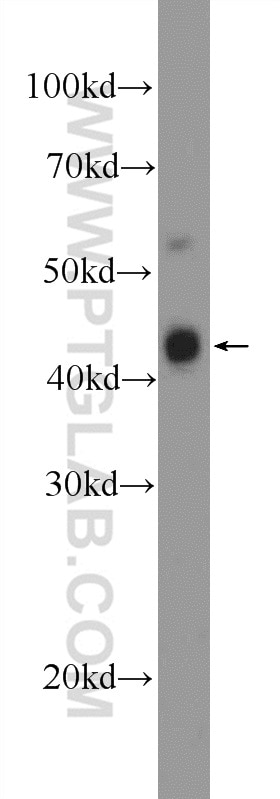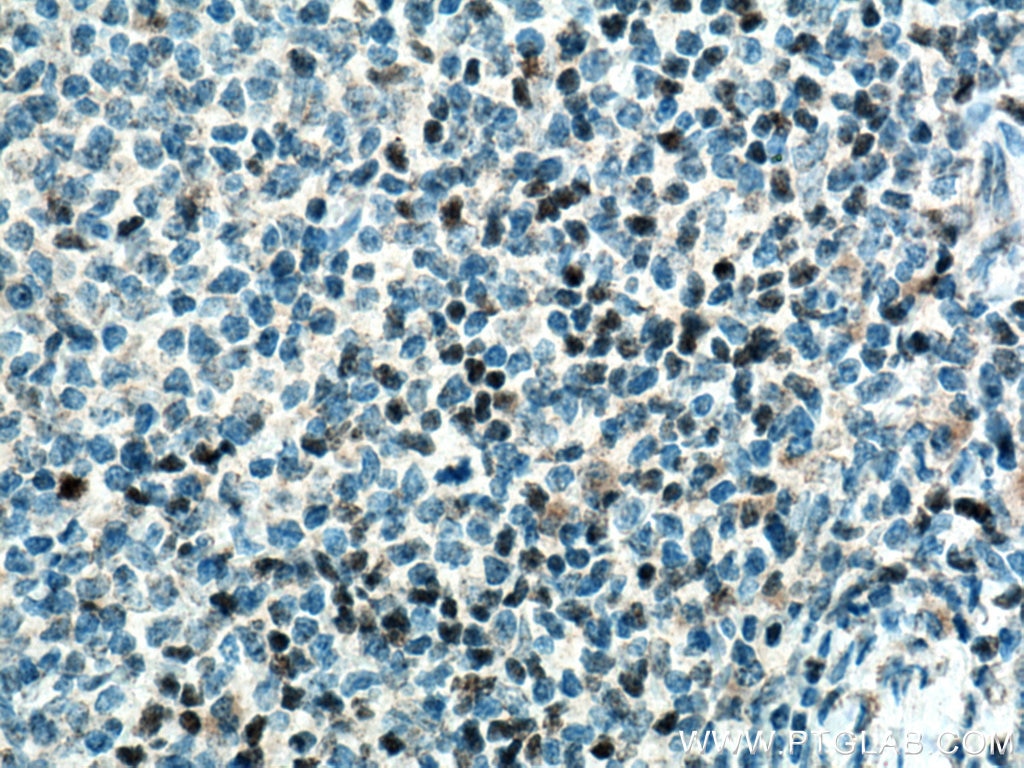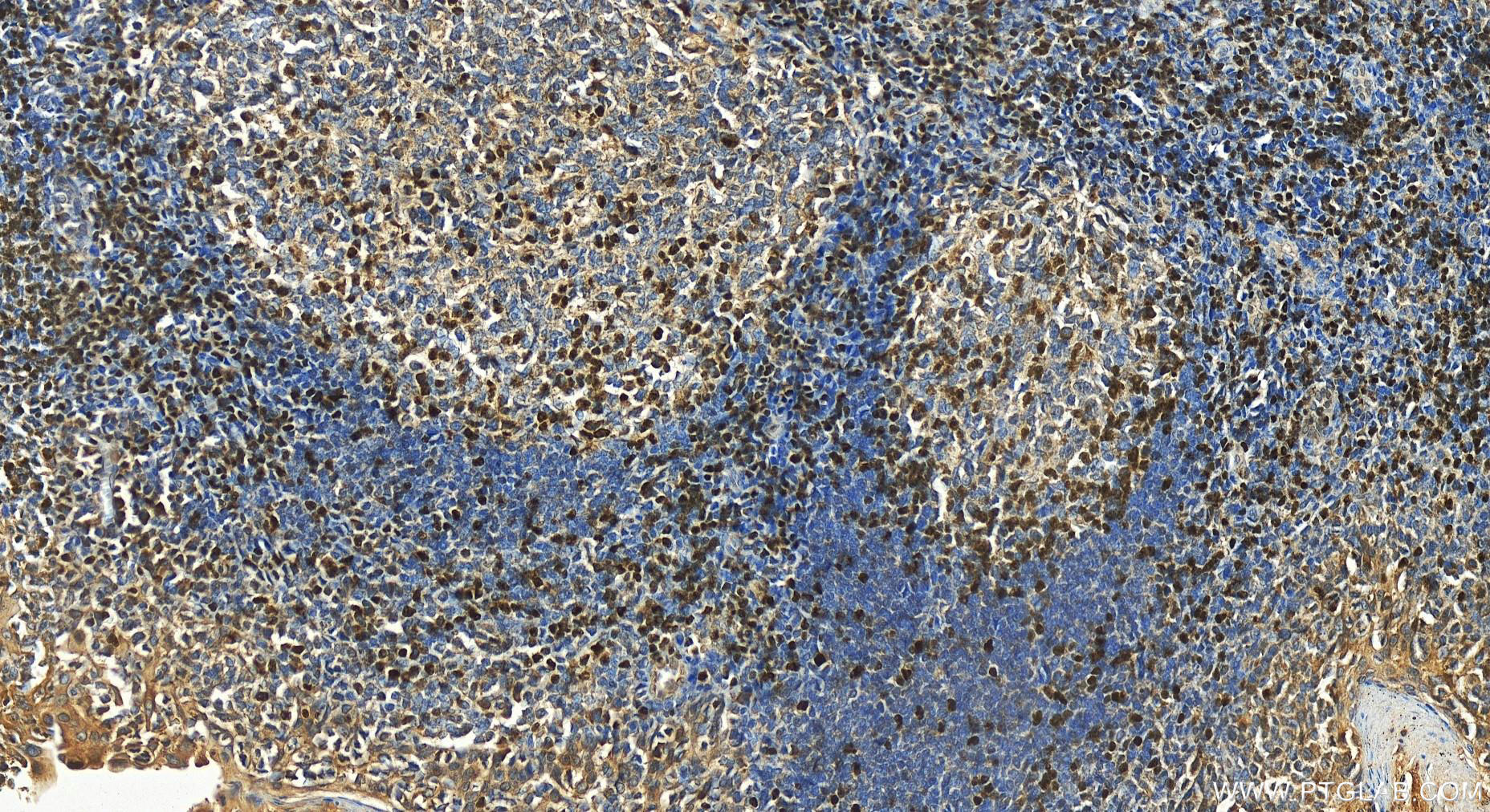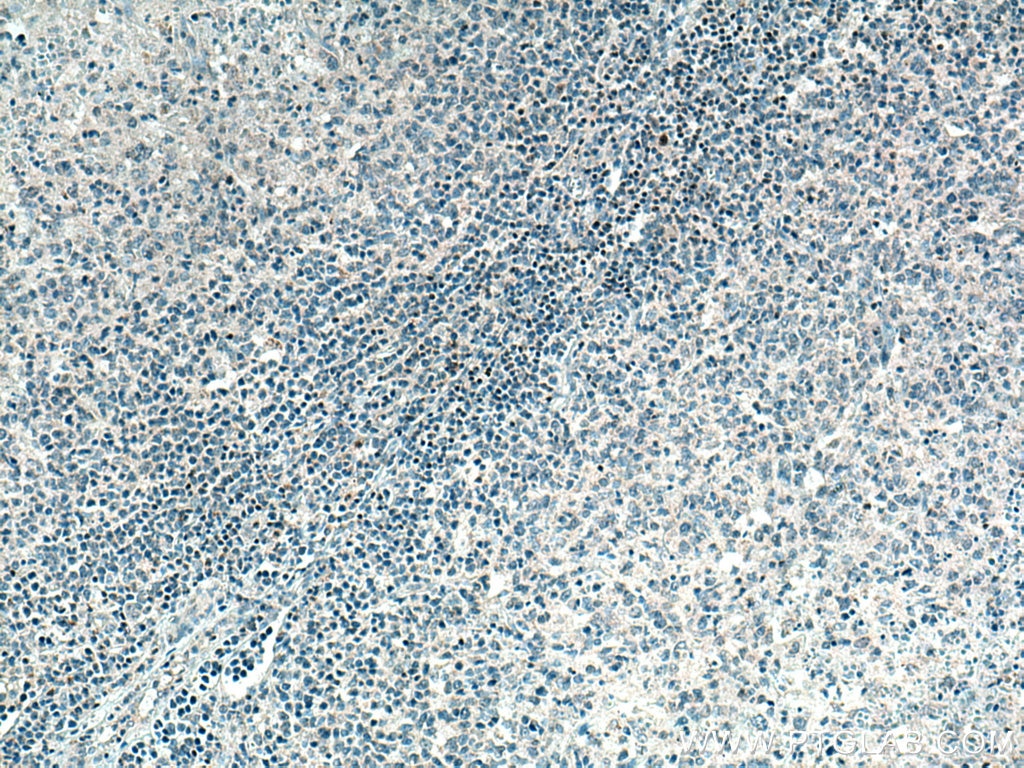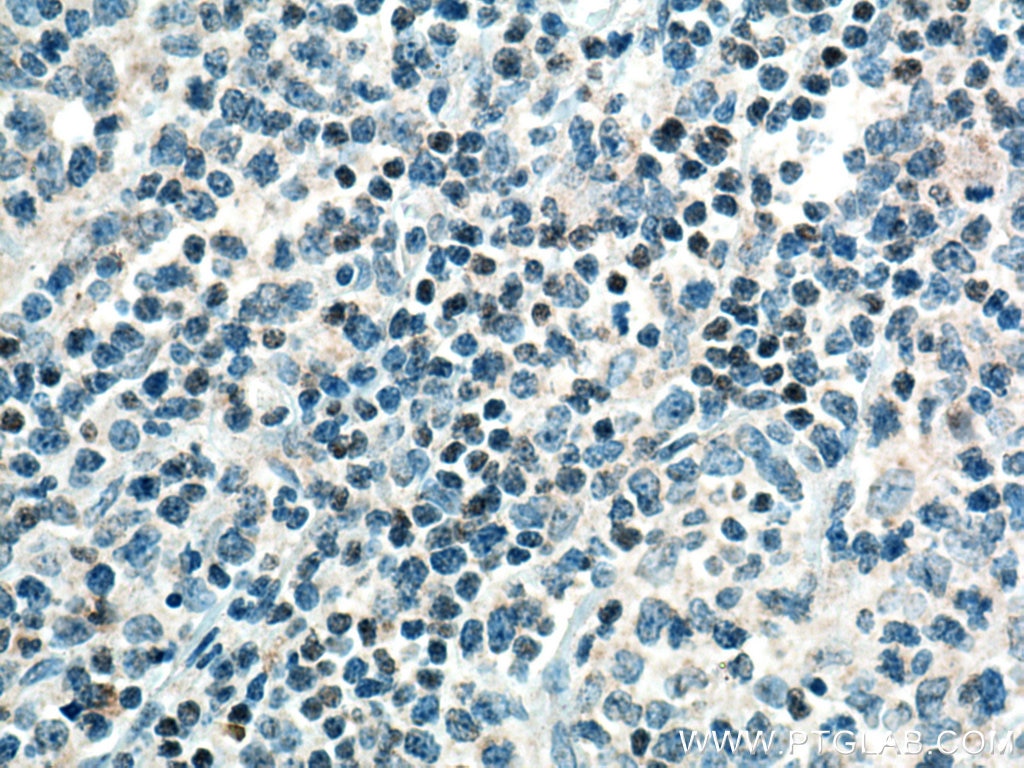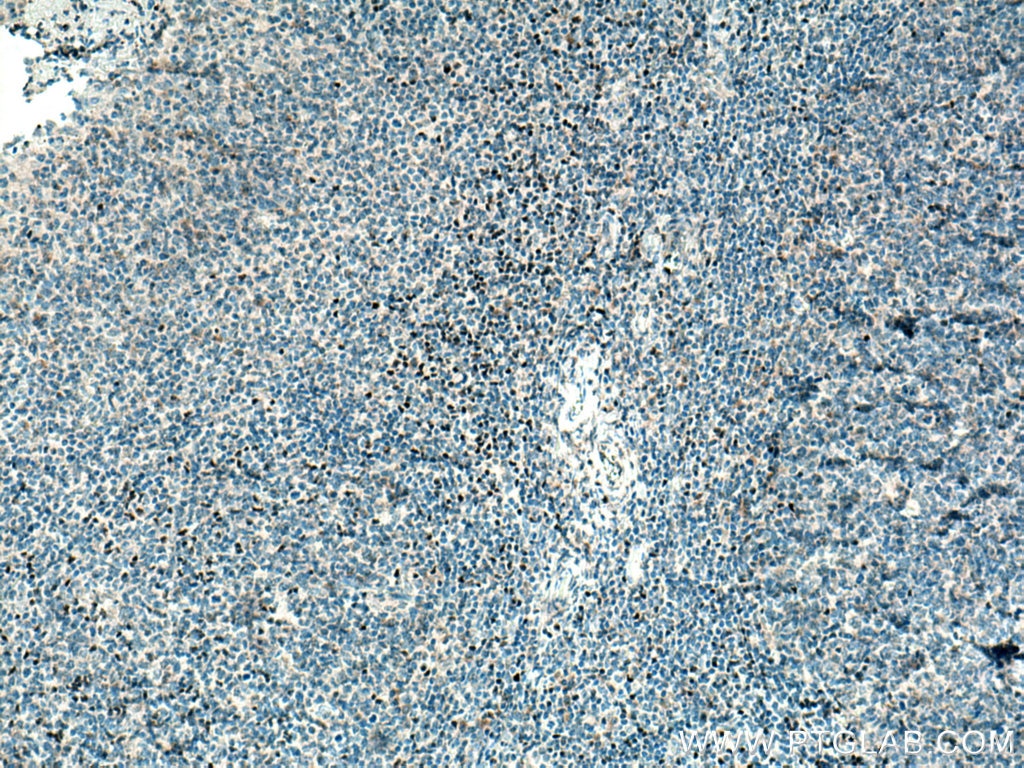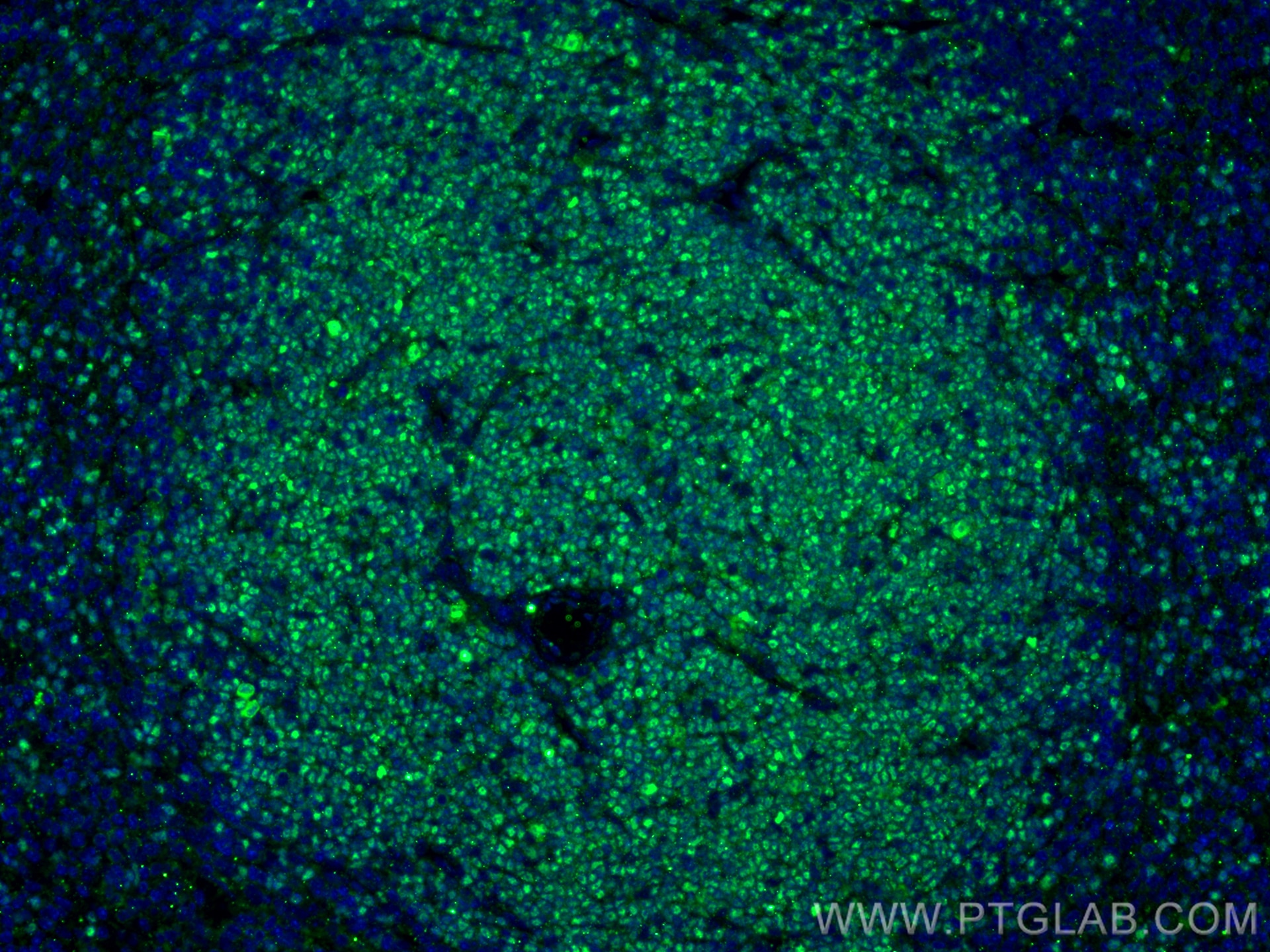- Featured Product
- KD/KO Validated
TCF1/TCF7 Polyklonaler Antikörper
TCF1/TCF7 Polyklonal Antikörper für WB, IHC, IF-P, ELISA
Wirt / Isotyp
Kaninchen / IgG
Getestete Reaktivität
human, Maus
Anwendung
WB, IHC, IF-P, IP, ELISA
Konjugation
Unkonjugiert
Kat-Nr. : 14464-1-AP
Synonyme
Geprüfte Anwendungen
| Erfolgreiche Detektion in WB | Maus-Thymusgewebe |
| Erfolgreiche Detektion in IHC | humanes Tonsillitisgewebe, humanes Lymphomgewebe Hinweis: Antigendemaskierung mit TE-Puffer pH 9,0 empfohlen. (*) Wahlweise kann die Antigendemaskierung auch mit Citratpuffer pH 6,0 erfolgen. |
| Erfolgreiche Detektion in IF-P | Mausmilzgewebe |
Empfohlene Verdünnung
| Anwendung | Verdünnung |
|---|---|
| Western Blot (WB) | WB : 1:500-1:1000 |
| Immunhistochemie (IHC) | IHC : 1:50-1:500 |
| Immunfluoreszenz (IF)-P | IF-P : 1:50-1:500 |
| It is recommended that this reagent should be titrated in each testing system to obtain optimal results. | |
| Sample-dependent, check data in validation data gallery | |
Veröffentlichte Anwendungen
| KD/KO | See 1 publications below |
| WB | See 20 publications below |
| IHC | See 5 publications below |
| IP | See 1 publications below |
Produktinformation
14464-1-AP bindet in WB, IHC, IF-P, IP, ELISA TCF1/TCF7 und zeigt Reaktivität mit human, Maus
| Getestete Reaktivität | human, Maus |
| In Publikationen genannte Reaktivität | human, Maus |
| Wirt / Isotyp | Kaninchen / IgG |
| Klonalität | Polyklonal |
| Typ | Antikörper |
| Immunogen | TCF1/TCF7 fusion protein Ag5792 |
| Vollständiger Name | transcription factor 7 (T-cell specific, HMG-box) |
| Berechnetes Molekulargewicht | 42 kDa |
| Beobachtetes Molekulargewicht | 43 kDa |
| GenBank-Zugangsnummer | BC048769 |
| Gene symbol | TCF1/TCF7 |
| Gene ID (NCBI) | 6932 |
| Konjugation | Unkonjugiert |
| Form | Liquid |
| Reinigungsmethode | Antigen-Affinitätsreinigung |
| Lagerungspuffer | PBS with 0.02% sodium azide and 50% glycerol |
| Lagerungsbedingungen | Bei -20°C lagern. Nach dem Versand ein Jahr lang stabil Aliquotieren ist bei -20oC Lagerung nicht notwendig. 20ul Größen enthalten 0,1% BSA. |
Hintergrundinformationen
TCF7, also known as TCF1, belongs to the TCF/LEF family. TCF7 is part of the Wnt signaling pathway and plays an important role in the differentiation and self-renewal of memory T cells. It has been found that TCF7 is necessary to revive T cells in response to PD-1 blockade against viral infection or cancer. TCF7 is mainly expressed in T-cells and is also detected in proliferating intestinal epithelial cells and in the basal epithelial cells of mammary gland epithelium. TCF7 has 16 isoforms with the molecular mass of 28-54 kDa (PMID: 34044317).
Protokolle
| PRODUKTSPEZIFISCHE PROTOKOLLE | |
|---|---|
| WB protocol for TCF1/TCF7 antibody 14464-1-AP | Protokoll herunterladen |
| IHC protocol for TCF1/TCF7 antibody 14464-1-AP | Protokoll herunterladenl |
| IF protocol for TCF1/TCF7 antibody 14464-1-AP | Protokoll herunterladen |
| STANDARD-PROTOKOLLE | |
|---|---|
| Klicken Sie hier, um unsere Standardprotokolle anzuzeigen |
Publikationen
| Species | Application | Title |
|---|---|---|
Cell Mol Immunol TRIM27 maintains gut homeostasis by promoting intestinal stem cell self-renewal | ||
Clin Cancer Res Single-Cell Analyses Reveal Mechanisms of Cancer Stem Cell Maintenance and Epithelial-Mesenchymal Transition in Recurrent Bladder Cancer.
| ||
Int J Biol Macromol Correlation between TCF7 and bladder cancer and feasibility of Erlotinib targeting in bladder cancer: Molecular mechanism and expression of TCF7 recombinant protein | ||
Clin Transl Med Long noncoding RNA LINC01606 protects colon cancer cells from ferroptotic cell death and promotes stemness by SCD1-Wnt/β-catenin-TFE3 feedback loop signalling. | ||
iScience Suppression of preadipocyte determination by SOX4 limits white adipocyte hyperplasia in obesity | ||
J Transl Med Forkhead Box S1 mediates epithelial-mesenchymal transition through the Wnt/β-catenin signaling pathway to regulate colorectal cancer progression. |
